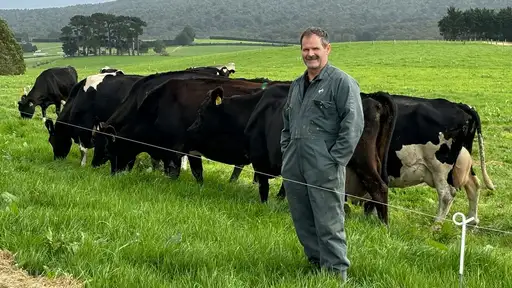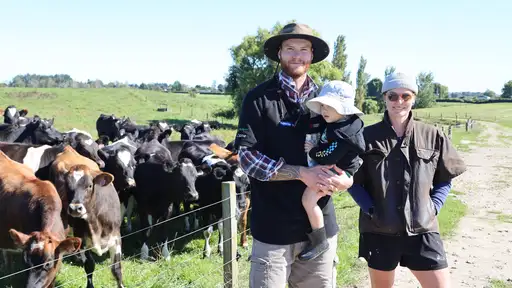For more about the result and some of the year’s highlights, visit www.ayearinreview.lic.co.nz
Performance Highlights:
- $236.4 million total revenue, up 16% from $203.5 million last year.
- $27 million earnings before interest and tax (EBIT) excluding bull team revaluation and one-off transformation costs[1] of $20.7 million, up 175% on last year.
- Reported EBIT of $14.9 million, 54% down on same period last year. This is due to the impact of the one-off transformation costs and the annual revaluation of the biological bull team.
- $9.3 million net profit after tax (NPAT), down from $20.8 million last year due to one-off transformation costs and a smaller increase in bull valuation than last year[1].
- $3.0 million Underlying Net earnings (NPAT excluding the increase on fair value of the biological assets and related tax effect), same as previous year.
*Notes about the financial information are set out at the end of this market statement, including information about the non-GAAP financial information.
Total revenue for the year was relative to last year and LIC’s highest ever annual revenue amount. This reflects sustained confidence from farmers in LIC and the value its products provide for herd improvement.
Board chair Murray King said the full-year result was in-line with market expectations and shows a strong underlying increase in profitability from the 2016-17 financial year after allowing of the one-off costs related to the transformation programme.
“This is a positive result and reflects a strong performance in our core service areas of artificial breeding (AB) and herd testing, as well as continued benefits from our transformation programme.
“After a year of transformation and change, including share simplification, our co-operative is in strong shape.
“As a business we are more match-fit than what we have ever been and better positioned to deliver good outcomes for our farmers.
“Ongoing volatility in milk prices, increasing environmental constraints and new biosecurity challenges such as Mycoplasma bovis show how critical it is that as a co-operative we take nothing for granted and that we continue our focus on agility and being ready to respond to disruptive threats.”
Sales from core products including AB and herd testing were up on the previous year, with 5.2 million AB straws sold and 10.9 million milk samples processed. Demand for diagnostics and animal health testing was also strong and international business continued to grow with AB export sales exceeding 1 million straws for the first time.
Other business highlights for the year included the launch of a new pasture management service SPACEÔ which utilises satellite technology to estimate a farm’s pasture cover.
The result includes the annual non-cash revaluation of the biological bull team, required under accounting standards to reflect “fair value”. The valuation is based on a model designed independently of LIC that looks at future revenue streams and costs associated with the current bulls owned, discounted back to current value. The 2017-18 financial year saw the valuation of the team increase slightly, after a significant increase the year prior. This reflects increased confidence for future milk price and confidence from farmers, in NZ and internationally in LIC genetics, as well as cost efficiencies.
Strategy refresh
During the year LIC completed a refresh of its strategy to ensure it remains fit for purpose and aligned with the co-operative’s direction. The strategy is on the LIC website.
“The refreshed strategy reiterates that our growth will be innovation-led but with an ongoing focus on the core New Zealand dairy industry,” said King.
Mycoplasma bovis
The presence of M. bovis in New Zealand is a significant concern for everyone in the dairy industry, King said.
“LIC is taking all measures possible to protect the national herd from this disease and working closely with MPI in this process. We have extensively tested our bulls and found no sign or indication of M. bovis. We are taking nothing for granted but we are confident that the measures we have in place will protect our bulls and customers from the disease.”
Outlook
The increased revenue position in the 2017-18 financial year was driven by the success of the transformation programme. However NPAT is lower as it includes the one-off implementation costs of the programme. These costs will not be incurred in years ahead, so a stronger reported EBITDA and reported EBIT is expected next financial year. LIC expects underlying earnings for the 2018-19 financial year to be in the range of $18-22 million, assuming no significant climate event or milk price drop takes place between now and then nor any major impacts from M. bovis.
Other key points:
- A full year dividend of $2.44 million fully imputed will be paid to shareholders on 17 August, representing 80% of underlying earnings. This is the first dividend to be paid on LIC’s ordinary shares.
- LIC continues to operate a strong balance sheet with total assets including cash, software, land and buildings and bull teams of $342 million with an equity ratio of 71%. Bank loans were $19.6 million at year end, down from $32.1 million the previous year.
- Cash flows from operations reflected both stronger on-farm cash position and lower costs of the business to be $37.8 million for 2017/2018, compared to $25.4 million in 2016/2017.
- Research and Development investment continued to be high with $13.2 million (5.6% of revenue) this year ($13.9 million and 6.9% prior year).
For more about the result and some of the year’s highlights, visit www.ayearinreview.lic.co.nz
Notes to Financial Information
Non-GAAP financial information does not have a standardised meaning prescribed by GAAP and therefore may not be comparable to similar financial information presented by other entities. As this is a half-year update, the numbers relating to November 2017 have not been audited.
Notes: [1] One-off transformation costs pre-tax of $20.7 million were incurred in the period. EBITDA and EBIT numbers, excluding one-off transformation costs, are presented as they are considered useful to investors to provide an indication of the change in business performance. The numbers presented are non-GAAP financial information.
[2] Underlying Earnings is the company’s NPAT excluding bull valuation but, for the avoidance of doubt, including one-off transformation costs. Underlying Earnings is considered useful to investors as it is the basis on which LIC has historically reported and it is the basis on which LIC makes its determination of dividends.




